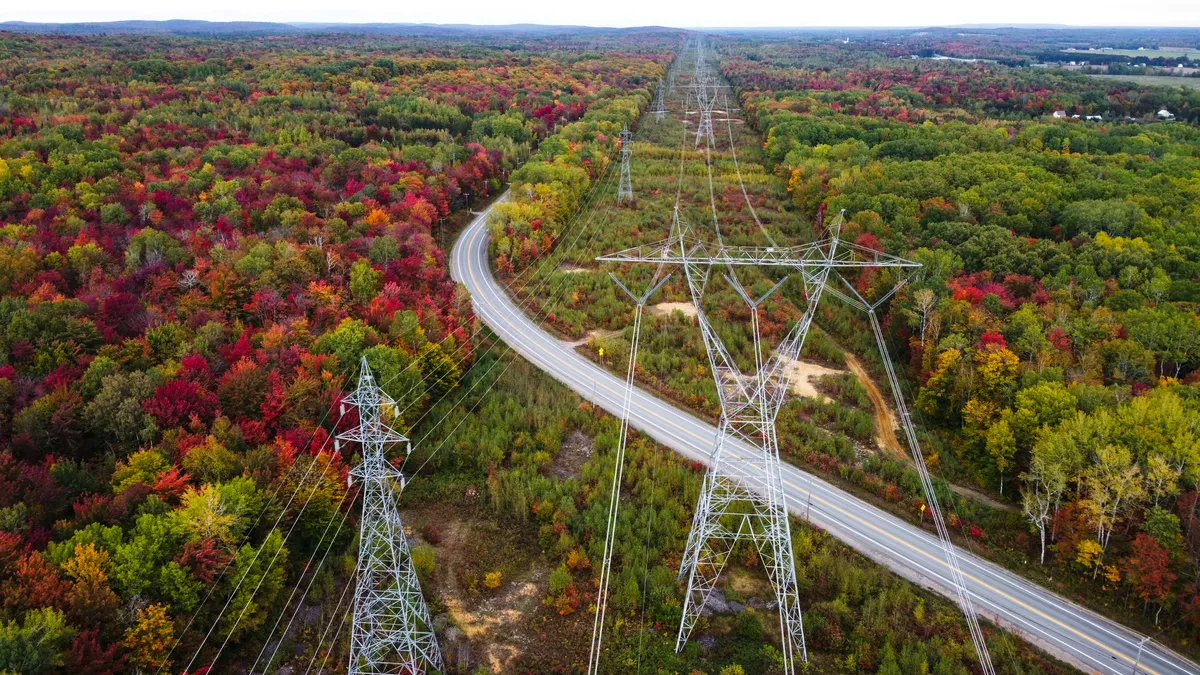Eight Northeastern states on Friday asked the Department of Energy to help fund and support an interregional transmission planning collaboration across three grid operator footprints.
“By convening this group and leveraging DOE’s technical expertise, DOE and states representing New England, New York and New Jersey can work in partnership to explore opportunities for increased interconnectivity, including for offshore wind, between our regions,” the states said in a letter to DOE.
Increased interconnection between regions could lower electricity prices through a larger marketplace for low-cost clean energy, bolster reliability during extreme weather and grid stress, and increase access to renewable energy to meet decarbonization goals, the Massachusetts Office of Energy and Environmental Affairs said in a news release.
ISO New England, the New York Independent System Operator and the PJM Interconnection could be asked to assist with the initiative, according to the states.
The regional transmission organizations could help identify cost-effective options for increasing transfer capability between their footprints, the states said, noting they cooperate through ISO-NE’s Interregional Planning Stakeholder Advisory Committee.
The initiative is “incredibly helpful,” according to Rob Gramlich, president of consulting firm Grid Strategies.
“The worst reliability trouble spot in the country is New England in winter cold spell situations,” he said in an email. “An integrated on- and offshore transmission network would help provide power when New England is short.”
The initiative comes as Congress and the Federal Energy Regulatory Commission are considering changes to transmission planning and operations to increase transfer capacity between regions.
“Rather than wait for new regulatory mandates to spur action, we can collectively take steps now to consider expanding ties between our regions to help enhance system reliability and transition to a clean energy future more quickly and affordably,” the states said.
This summer, NYISO can export 1,600 MW to New England and 1,225 MW to PJM, according to a May report from the grid operator. It can import 1,400 MW from New England and 2,250 MW from PJM. There is no direct transmission connection between PJM and ISO-NE.
The collaborative could be expanded to include other states and Canadian representatives, according to the letter.
This summer, collaborative participants will hash out the scope of the initiative, such as whether it will focus on offshore transmission, onshore or both, a Massachusetts official said. They will also review funding opportunities such as the $100 million available through the DOE’s Grid Deployment Office for interregional and offshore transmission planning, the official said.
Most of the states in the collaboration have aggressive clean energy goals, including for offshore wind.
Early this year, four New England states proposed working with transmission providers, wind developers and ISO-NE to identify a portfolio of transmission projects for an offshore wind network. Ultimately, Massachusetts and Connecticut proposed three interconnections for offshore wind.
Separately, ISO-NE aims to release a draft transmission study by November looking at New England’s transmission needs for 2050. The grid operator is working to develop a tariff proposal that could be filed this year at FERC that would allow the states to ask ISO-NE to issue solicitations for those projects, according to the official.














